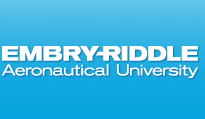Is this project an undergraduate, graduate, or faculty project?
Undergraduate
group
What campus are you from?
Daytona Beach
Authors' Class Standing
Samantha Goldfuss, sophomore Stefani Capasso-Villanueva, sophomore
Lead Presenter's Name
Samantha Goldfuss
Faculty Mentor Name
Foram Madiyar
Abstract
Ionizing radiation is a factor that is linked to increasing the chances of developing melanoma; specifically ultraviolet (UV) radiation, which is produced by the sun. Luckily for us on Earth, there are two natural sources that can protect us from UV, the atmosphere and a polymer produced by our cells called melanin. Both of these sources are able to absorb radiation, shielding our skin from it. However, most UV radiation is absorbed by the atmosphere, and missions done in Low Earth Orbit (LEO) do not benefit from the atmosphere's UV absorbing properties. The aim of this project is to create a UV resistant sheath, which can be applied to LEO missions and other outer space missions, by mixing a self-healing polymer with melanin nanoparticles and zinc-doped bismuth oxide particles to enhance the melanin’s UV absorbance properties. To test the effectiveness of UV protective sheath, a biofilm placed on a petri dish covered with the melanin enhanced polymer will be irradiated and it will be evaluated depending on the survival rate of the bacteria, as well as how much UV light it is able to absorb.
Did this research project receive funding support from the Office of Undergraduate Research.
Yes, Ignite Grant
Synthesizing Photoprotective Melanin Nanoparticles with a Zinc-doped Bismuth Oxide Coating to Withstand UV Radiation
Ionizing radiation is a factor that is linked to increasing the chances of developing melanoma; specifically ultraviolet (UV) radiation, which is produced by the sun. Luckily for us on Earth, there are two natural sources that can protect us from UV, the atmosphere and a polymer produced by our cells called melanin. Both of these sources are able to absorb radiation, shielding our skin from it. However, most UV radiation is absorbed by the atmosphere, and missions done in Low Earth Orbit (LEO) do not benefit from the atmosphere's UV absorbing properties. The aim of this project is to create a UV resistant sheath, which can be applied to LEO missions and other outer space missions, by mixing a self-healing polymer with melanin nanoparticles and zinc-doped bismuth oxide particles to enhance the melanin’s UV absorbance properties. To test the effectiveness of UV protective sheath, a biofilm placed on a petri dish covered with the melanin enhanced polymer will be irradiated and it will be evaluated depending on the survival rate of the bacteria, as well as how much UV light it is able to absorb.


